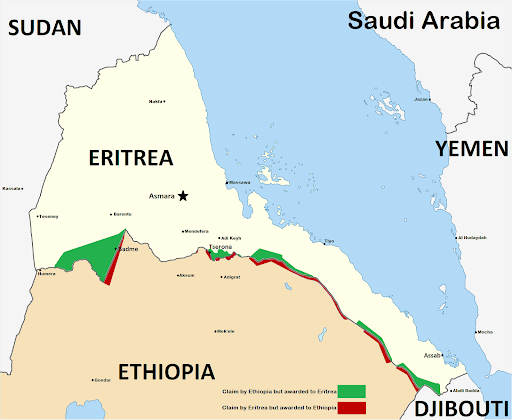Amy writes about her experience with Hyab, from UNESCO RILA, and his wonderful contribution to our collection.
My name is Amy and I have recently completed my masters degree in Museum and Artefact Studies from Durham University. I am currently undertaking a 6 month placement with the Scottish Crannog Centre.
I am eager to gain more hands-on experience, especially with the museum collections and the displays within the museum. As part of this placement I am assisting the curator, Fran, with the creation of a new display case. This will showcase various stone artefacts, from the museum’s collection with an emphasis on memory within Iron Age society.
We are very lucky to be able to work alongside Hyab Yohannes on this project. Hyab works alongside UNESCO RILA and has recently donated some quartz stones to the museum. These pieces have an amazing story, originating from Eritrea (see the map). In the 1970s, Beskdira and Ona experienced two of the worst massacres in Eritrea’s history after Ethiopian colonial troops descended on the villages.
the museum. These pieces have an amazing story, originating from Eritrea (see the map). In the 1970s, Beskdira and Ona experienced two of the worst massacres in Eritrea’s history after Ethiopian colonial troops descended on the villages.
The villagers decided to hold pieces of quartz in their hands during the massacre as they believed it was important for their story to be told in order for future generations to learn about their sacrifice and help to create a better world to live in.
You can read more about the story here.
Hyab explained that the quartz pebbles could be used as markers, one for each inhabitant to inform villagers and outsiders about the size of the community. They would be placed into the perimeter fence of a village. The quartz would then help to keep a collective memory alive, an idea that we wished to explore within our stones display.
On the 10th of March, Hyab joined myself and Fran in the museum where we were able to study the stone objects in our collections. This led to a very interesting conversation about memory and interpretation. Hyab had some amazing stories and ideas behind objects, which created completely different ideas to what we had previously had.
In order to better understand these artefacts, we must remove our modern day ideas, assumptions and beliefs. Today, we have an entirely different knowledge system, something that would be unfamiliar to those in the Iron Age. Therefore, our modern day interpretations and ideas may be very far off from the reality of these pieces.
Between us, we selected the objects that we wished to showcase and are beginning to work on text to display alongside the stones. After this is complete, all that is left to do is place the stones and their accompanying text in the display case, in time for our Spring opening. Hyab’s trip was so informative and inspiring, building my knowledge of the Iron Age and the tools they were using.
I am so looking forward to carrying out this project and I look forward to welcoming everyone to view the collection once it’s put on display!




